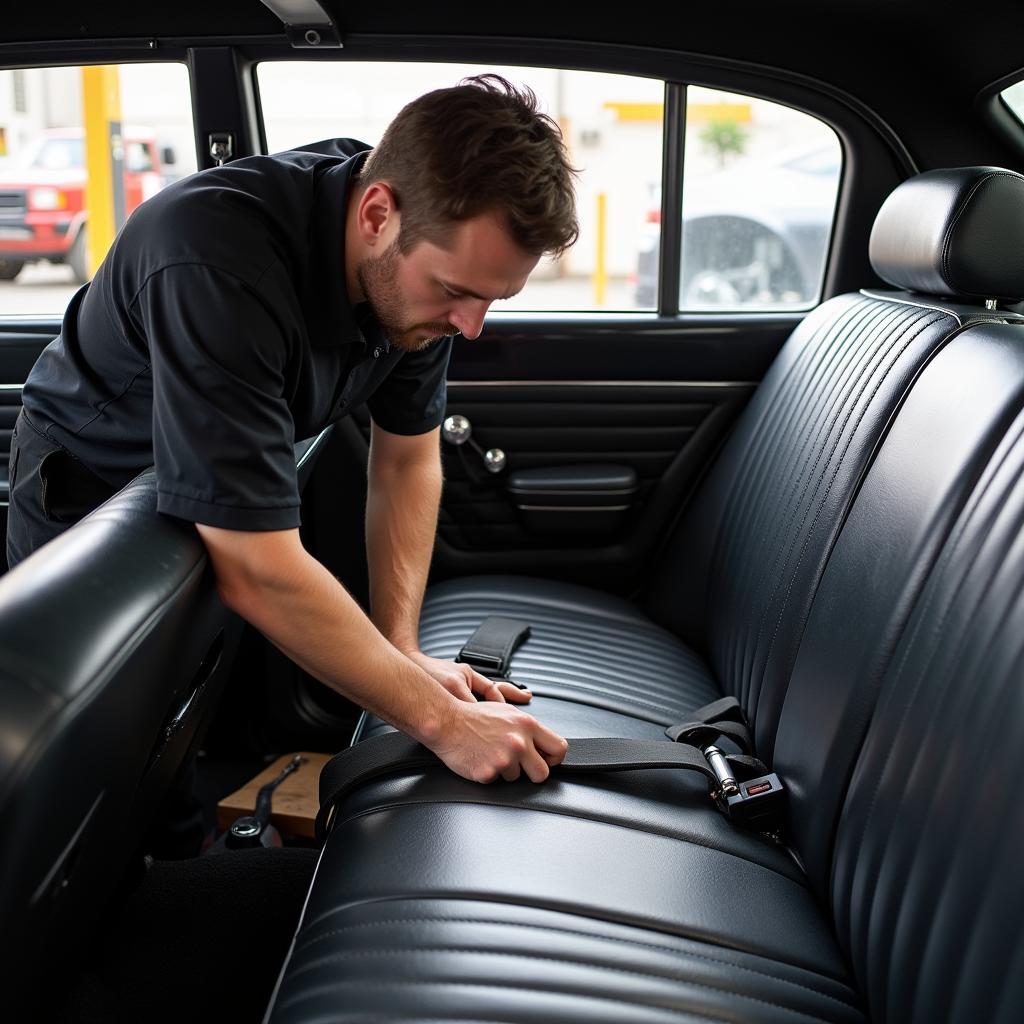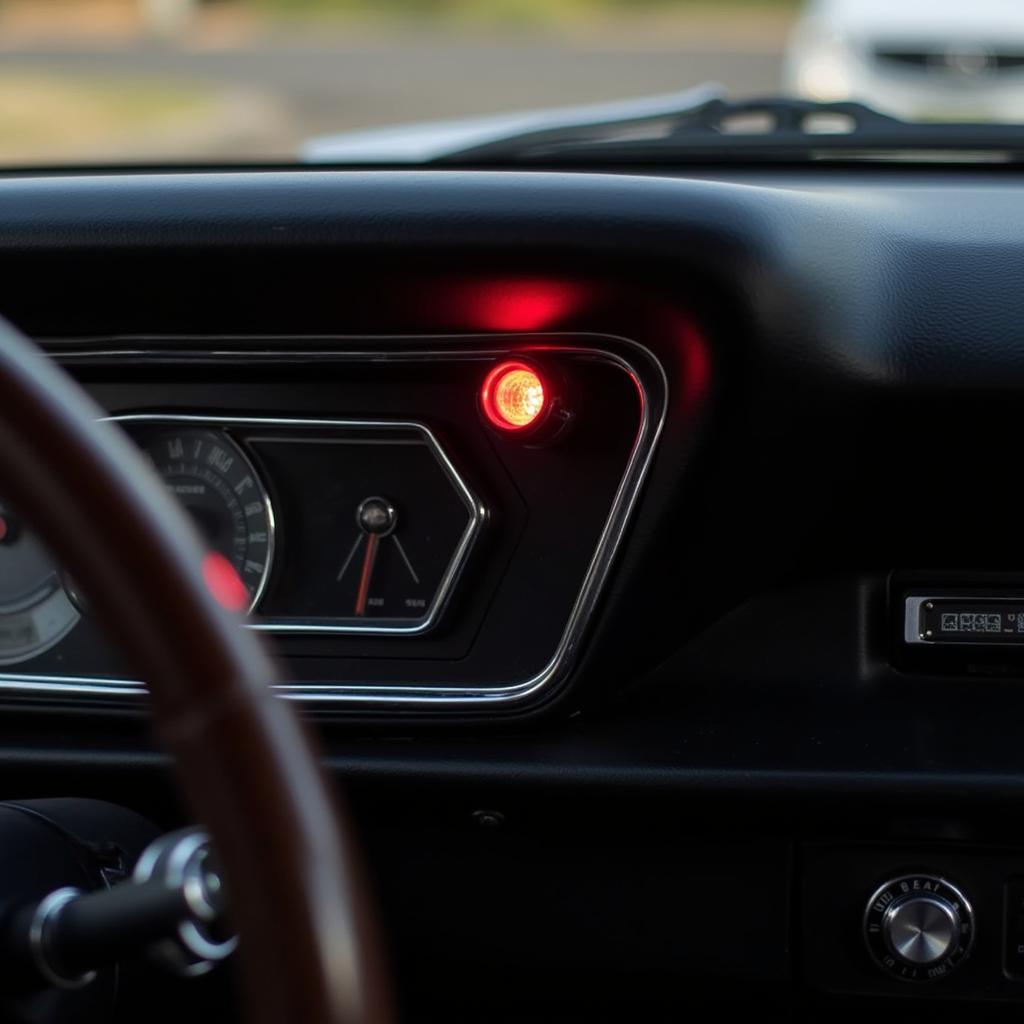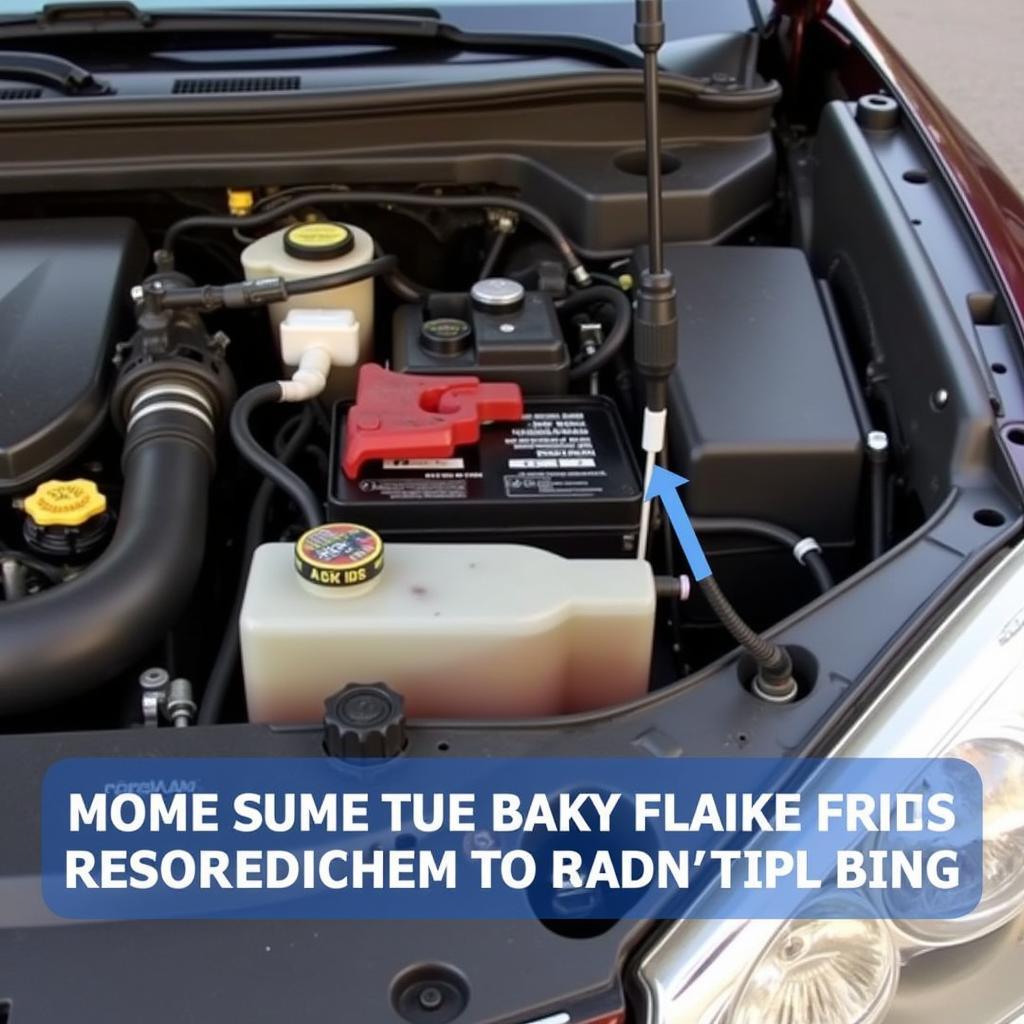Owning a classic car is a dream for many, but these vintage vehicles often lack the safety features we take for granted today. One such feature is a seat belt warning system. While not standard in older models, it’s a smart upgrade for safety-conscious classic car owners. Wondering how to add a seat belt warning system to classic cars? Let’s dive into the process.
Why You Need a Seat Belt Warning System
Before we explore how to add a seat belt warning system to classic cars, let’s discuss why it’s crucial.
- Increased Safety: Seat belts dramatically reduce the risk of serious injury or fatality in an accident. A warning system acts as a constant reminder to buckle up.
- Peace of Mind: Enjoy your classic car adventures knowing you’ve taken a step to enhance your safety and that of your passengers.
- Legal Compliance: While not always mandatory for classic cars, having a seat belt warning system can help you comply with potential future regulations.
 Installing Seat Belts in a Classic Car
Installing Seat Belts in a Classic Car
Understanding the Basics
Adding a seat belt warning system to classic cars doesn’t have to be overly complicated. The basic components include:
- Seat Belt Buckle Sensors: These small sensors are typically installed within the seat belt buckle receptacles and detect when a buckle is fastened.
- Warning Light and Buzzer: A visual indicator, often located on the dashboard, illuminates when the seat belts aren’t fastened. A buzzer may also sound to provide an audible alert.
- Wiring and Connectors: These elements connect the sensors to the warning light and buzzer, creating a complete circuit.
Choosing the Right System
There are several factors to consider when choosing a seat belt warning system for your classic car:
- Universality vs. Vehicle-Specific: Universal kits are available and offer a general fit for various cars. However, a vehicle-specific kit, if available, might offer a more seamless integration with your classic car’s existing electrical system.
- Complexity: Some systems are simpler to install than others. Consider your DIY skills and comfort level with automotive wiring.
- Features: Systems might include additional features like adjustable warning durations or chime variations.
Installation Steps
While the exact steps may vary depending on the specific kit and your classic car model, here’s a general overview of how to add a seat belt warning system:
- Disconnect the Battery: Always prioritize safety. Before working on any electrical system in your car, disconnect the negative terminal of your battery.
- Mount Sensors and Warning Light: Determine the optimal locations for the seat belt buckle sensors and the dashboard warning light.
- Connect the Wiring: Following the kit’s instructions, connect the wiring harness from the sensors to the warning light and buzzer. This often involves routing wires under the dashboard and potentially through the firewall to the engine bay.
- Connect to Power Source: Locate a suitable switched power source in your fuse box. This ensures the warning system only activates when the ignition is on.
- Test the System: Reconnect the battery and turn on the ignition. Test the system by buckling and unbuckling the seat belts. The warning light and buzzer should activate accordingly.
 Seat Belt Warning Light in a Classic Car
Seat Belt Warning Light in a Classic Car
Professional Installation
If you’re not comfortable with wiring or working with car electronics, it’s best to consult a qualified mechanic or automotive electrician. They have the expertise to ensure the system is installed correctly and safely.
Maintaining Your System
Once installed, your new seat belt warning system requires minimal maintenance. Periodically check the following:
- Sensor Functionality: Ensure the sensors are free from debris or damage and are properly detecting the buckles.
- Wiring Connections: Visually inspect all wiring connections for looseness or corrosion.
- Warning Light and Buzzer: Make sure the light illuminates brightly and the buzzer sounds clearly when the seat belts are unfastened.
Classic Car Safety First
Adding a seat belt warning system is a worthwhile investment in your safety and can enhance your enjoyment of your classic car. For more insights into maintaining and upgrading your classic car’s safety features, check out these resources:
- mgb seat belt warning light
- 1966 mustang seat belt warning light
- add seat belt warning system to classic fiat cars
Remember, every drive in your classic car should be a safe and enjoyable experience. By adding a seat belt warning system, you’re taking a proactive step towards modernizing your classic car’s safety features.

